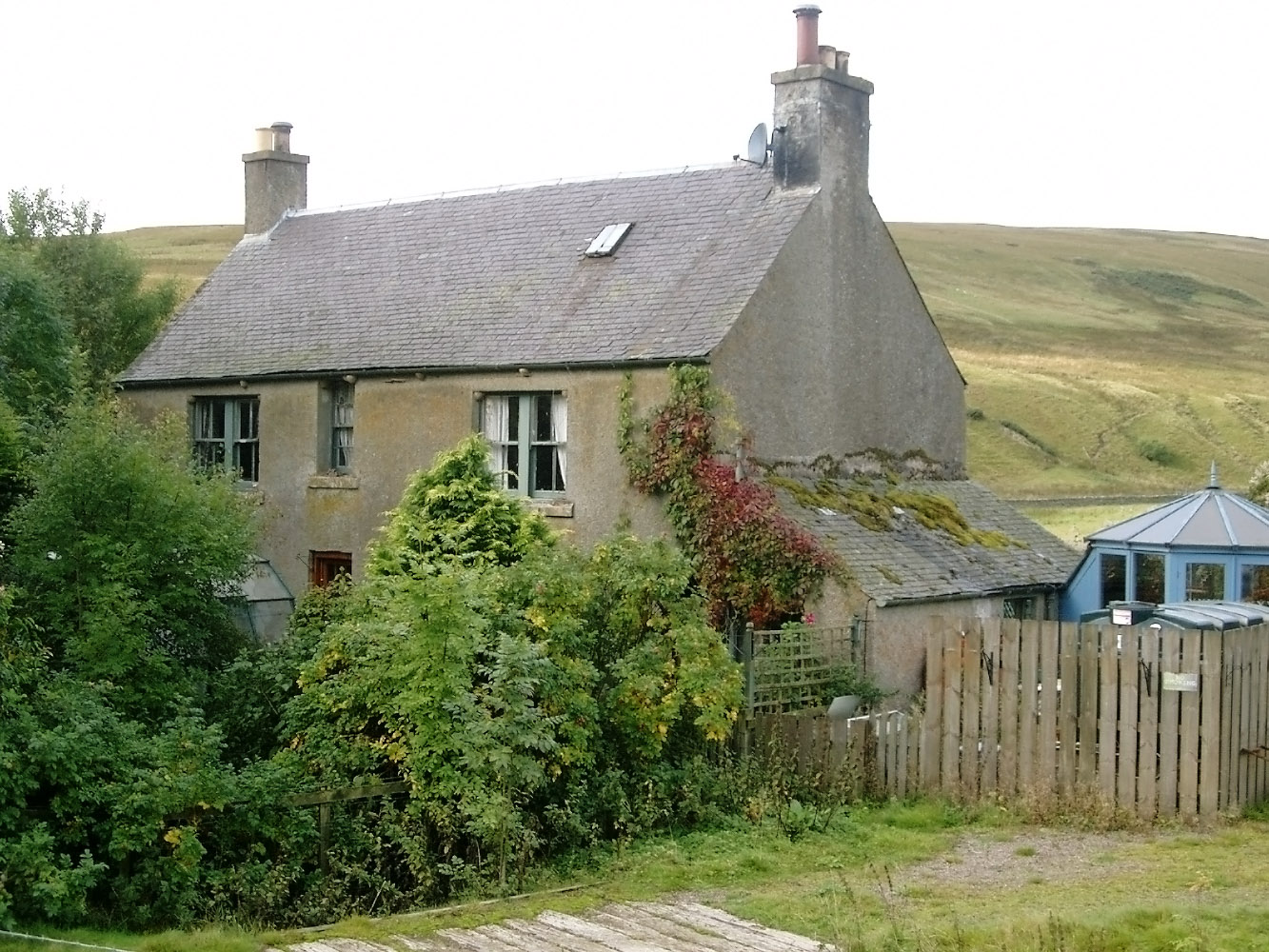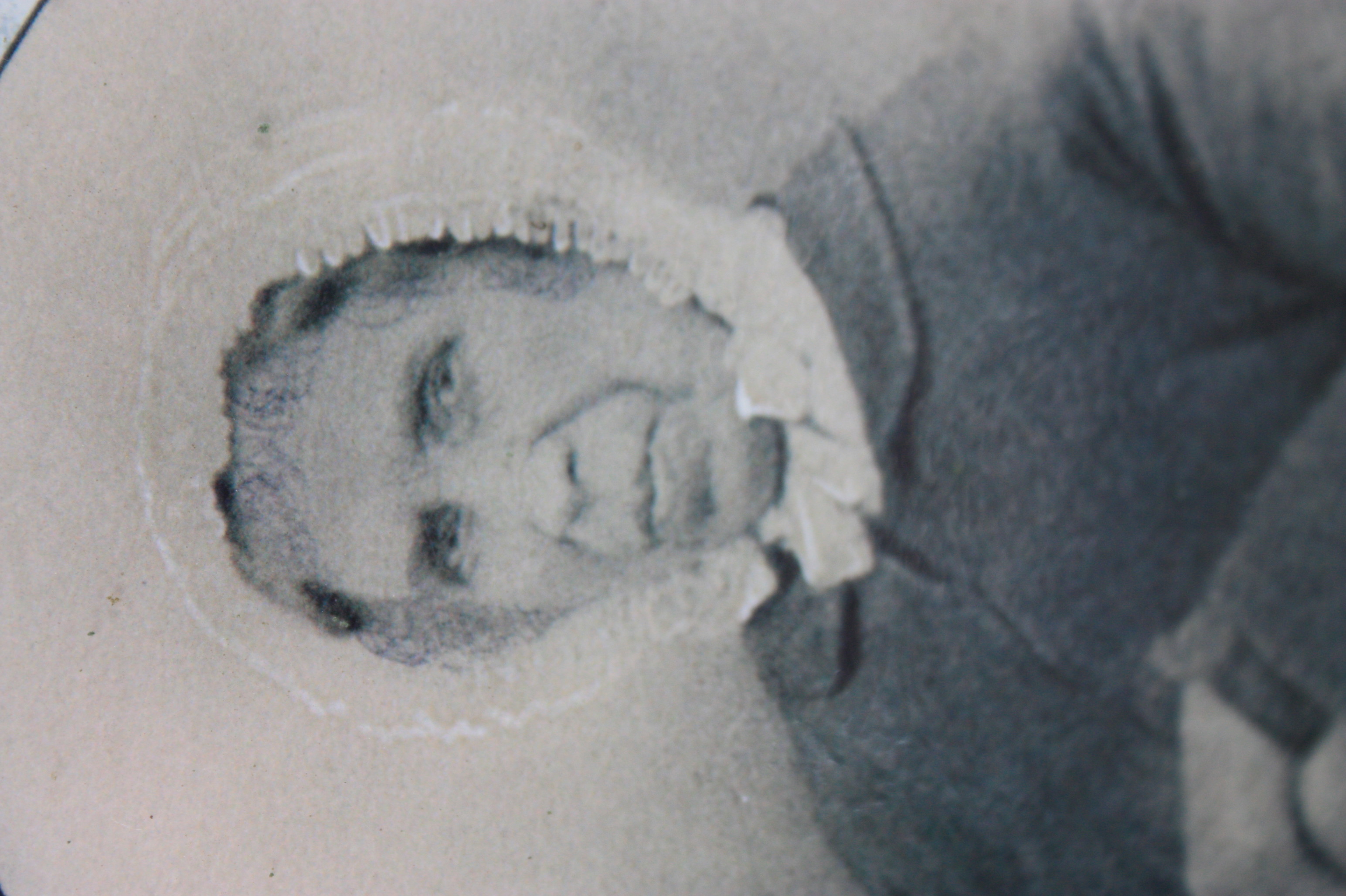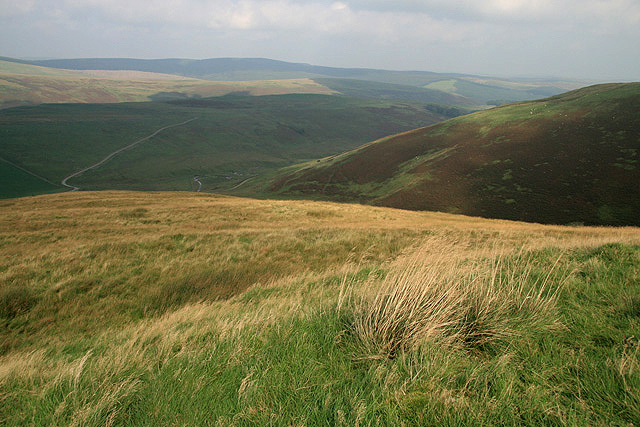|
Ettrick, Scotland
Ettrick (, ) is a small village and civil parish in the Scottish Borders area of Scotland. It is located on the B709, around south-west of the town of Selkirk. Local area Ettrick Water is the river which flows through the Ettrick Valley, and across its flood plain, the Ettrick Marshes, within Selkirkshire. It is the second fastest rising river in Scotland, and it runs through the village of Ettrickbridge some dozen miles downstream, and the old town of Selkirk. Ettrick Forest was a large Royal forest that is much depleted due to sheep farming and industrial forestry, though at some places by the banks of the Water, and in the ravines of its tributaries, places difficult for sheep and of small interest to loggers, the remnants of the fauna which composed the ancient forest can still be seen and enjoyed. Traditionally, hill farming of sheep and cattle farming have been important. In recent years, tourism has become increasingly important. Literary connections The area aroun ... [...More Info...] [...Related Items...] OR: [Wikipedia] [Google] [Baidu] |
Scottish Borders
The Scottish Borders is one of 32 council areas of Scotland. It is bordered by West Lothian, Edinburgh, Midlothian, and East Lothian to the north, the North Sea to the east, Dumfries and Galloway to the south-west, South Lanarkshire to the west, and the English Ceremonial counties of England, ceremonial counties of Cumbria and Northumberland to the south. The largest settlement is Galashiels, and the administrative centre is Newtown St Boswells. The term "Scottish Borders" is also used for the areas of southern Scotland and northern England that bound the Anglo-Scottish border, namely Dumfries and Galloway, Scottish Borders, Northumberland, and Cumbria. The council area occupies approximately the same area as the Shires of Scotland, historic shires of Berwickshire, Peeblesshire, Roxburghshire, and Selkirkshire. History The term Border country, Borders sometimes has a wider use, referring to all of the Counties of Scotland, counties adjoining the English border, also includin ... [...More Info...] [...Related Items...] OR: [Wikipedia] [Google] [Baidu] |
James Hogg
James Hogg (1770 – 21 November 1835) was a Scottish poet, novelist and essayist who wrote in both Scots language, Scots and English. As a young man he worked as a shepherd and farmhand, and was largely self-educated through reading. He was a friend of many of the great writers of his day, including Walter Scott, Sir Walter Scott, of whom he later wrote an unauthorised biography. He became widely known as the "Ettrick Shepherd", a nickname under which some of his works were published, and the character name he was given in the widely read series ''Noctes Ambrosianae'', published in ''Blackwood's Magazine''. He is best known today for his novel ''The Private Memoirs and Confessions of a Justified Sinner''. His other works include the long poem ''The Queen's Wake'' (1813), his collection of songs ''Jacobite Relics'' (1819), and his two novels ''The Three Perils of Man'' (1822), and ''The Three Perils of Woman'' (1823). Biography Early life James Hogg was born on a small farm nea ... [...More Info...] [...Related Items...] OR: [Wikipedia] [Google] [Baidu] |
Villages In The Scottish Borders
A village is a human settlement or Residential community, community, larger than a hamlet (place), hamlet but smaller than a town with a population typically ranging from a few hundred to a few thousand. Although villages are often located in rural areas, the term urban village is also applied to certain urban neighborhoods. Villages are normally permanent, with fixed dwellings; however, transient villages can occur. Further, the dwellings of a village are fairly close to one another, not scattered broadly over the landscape, as a dispersed settlement. In the past, villages were a usual form of community for societies that practice subsistence agriculture and also for some non-agricultural societies. In Great Britain, a hamlet earned the right to be called a village when it built a Church (building), church. [...More Info...] [...Related Items...] OR: [Wikipedia] [Google] [Baidu] |
Tibbie Shiel
Tibbie Shiel (1783–1878) was a Scottish inn keeper who ran Tibbie Shiel's Inn on St Mary's Loch in the Scottish Borders and was known to many authors and poets, and the subject of numerous literary works. Life She was born Isabella Shiel in 1783, in Ettrick, Scotland, Ettrick to Walter Shiel and his wife Mary. She was generally known by the pet name "Tibbie". She received only basic schooling and was employed generally on farm work in the Scottish Borders including working on the Ettrick sheep farm of Robert Hogg (1729-1820), where she certainly first encountered his son, James Hogg, later to become a famous poet. In 1806 she married Robert Richardson, a molecatcher by trade. They had three sons and three daughters. In 1823 the family moved to the idyllic spot of St Mary's Cottage at the south end of St Mary's Loch. The lands were owned by Francis Napier, 8th Lord Napier, Lord Napier. Her husband died in 1824, soon after the move, and Tibbie was forced to support her fa ... [...More Info...] [...Related Items...] OR: [Wikipedia] [Google] [Baidu] |
Thomas Boston
Thomas Boston (17 March 167620 May 1732) was a Scottish Presbyterian church leader, theologian and philosopher. Boston was successively schoolmaster at Glencairn, and minister of Simprin in Berwickshire, and Ettrick in Selkirkshire. In addition to his best-known work, '' Human Nature in Its Fourfold State'', one of the religious classics of Scotland, he wrote an original little book, ''The Crook in the Lot'', and a learned treatise on the Hebrew points. He also took a leading part in the Courts of the Church in what was known as the " Marrow Controversy," regarding the merits of an English work, ''The Marrow of Modern Divinity'', which he defended against the attacks of the "Moderate" party in the Church. Boston, if unduly introspective, was a man of singular piety and amiability. His autobiography is an interesting record of Scottish life, full of sincerity and tenderness, and not devoid of humorous touches, intentional and otherwise. Life He was born at Duns. His father, Joh ... [...More Info...] [...Related Items...] OR: [Wikipedia] [Google] [Baidu] |
The View From Castle Rock
''The View from Castle Rock'' is a book of short stories by Canadian author Alice Munro, recipient of the 2013 Nobel Prize in Literature, which was published in 2006 by McClelland and Stewart. The book is a collection of historical and autobiographical stories. The first part of the book narrates the lives of members of the Laidlaw branch of the family tree of the author, starting from their Scottish origins in the 18th century. The second part consists of fictionalized tales inspired by events in her own life. Contents * Foreword * Part One / No Advantages ** "No Advantages" ** "The View from Castle Rock" ** "Illinois" ** "The Wilds of Morris Township" ** "Working for a Living" * Part Two / Home ** "Fathers" ** "Lying Under the Apple Tree" ** "Hired Girl" ** "The Ticket" ** "Home" ** "What Do You Want to Know For?" * Epilogue ** "Messenger" Stories No Advantages This narrative retells the lives of members of the Laidlaw family who lived in Ettrick Valley, Scotland, in the 18th ... [...More Info...] [...Related Items...] OR: [Wikipedia] [Google] [Baidu] |
Alice Munro
Alice Ann Munro ( ; ; 10 July 1931 – 13 May 2024) was a Canadian short story writer who was awarded the Nobel Prize in Literature in 2013. Her work tends to move forward and backward in time, with integrated short story cycles. Munro's fiction is most often set in her native Huron County in southwestern Ontario. Her stories explore human complexities in a simple but meticulous prose style. Munro received the Man Booker International Prize in 2009 for her life's work. She was also a three-time winner of Canada's Governor General's Award for Fiction, and received the Writers' Trust of Canada's 1996 Marian Engel Award and the 2004 Rogers Writers' Trust Fiction Prize for '' Runaway''. She stopped writing around 2013 and died at her home in 2024. Early life Munro was born Alice Ann Laidlaw in Wingham, Ontario. Her father, Robert Eric Laidlaw, was a fox and mink farmer, and later turned to turkey farming. Her mother, Anne Clarke Laidlaw (née Chamney), was a schoolteache ... [...More Info...] [...Related Items...] OR: [Wikipedia] [Google] [Baidu] |
Kidnapped (novel)
''Kidnapped'' is a historical novel, historical fiction adventure novel by Scottish people, Scottish author Robert Louis Stevenson, written as a boys' novel and first published in the magazine ''Young Folks (magazine), Young Folks'' from May to July 1886. The novel has attracted the praise and admiration of writers as diverse as Henry James, Jorge Luis Borges, and Hilary Mantel. A sequel, ''Catriona (novel), Catriona'', was published in 1893. The narrative is written in English with some dialogue in Lowland Scots Language, Lowland Scots, a Germanic language that evolved from an earlier incarnation of English. ''Kidnapped'' is set around real 18th-century Scottish events, notably the "Appin Murder" and the Highland Clearances, which occurred in the aftermath of the Jacobite rising of 1745. Many of the characters are real people, including one of the principals, Alan Breck Stewart. The political situation of the time is portrayed from multiple viewpoints, and the Scottish Highland ... [...More Info...] [...Related Items...] OR: [Wikipedia] [Google] [Baidu] |
Robert Louis Stevenson
Robert Louis Stevenson (born Robert Lewis Balfour Stevenson; 13 November 1850 – 3 December 1894) was a Scottish novelist, essayist, poet and travel writer. He is best known for works such as ''Treasure Island'', ''Strange Case of Dr Jekyll and Mr Hyde'', ''Kidnapped (novel), Kidnapped'' and ''A Child's Garden of Verses''. Born and educated in Edinburgh, Stevenson suffered from serious bronchial trouble for much of his life but continued to write prolifically and travel widely in defiance of his poor health. As a young man, he mixed in London literary circles, receiving encouragement from Sidney Colvin, Andrew Lang, Edmund Gosse, Leslie Stephen and William Ernest Henley, W. E. Henley, the last of whom may have provided the model for Long John Silver in ''Treasure Island''. In 1890, he settled in Samoa where, alarmed at increasing European and American influence in the Polynesia, South Sea islands, his writing turned from Romance (literary fiction), romance and adven ... [...More Info...] [...Related Items...] OR: [Wikipedia] [Google] [Baidu] |
John Buchan
John Buchan, 1st Baron Tweedsmuir (; 26 August 1875 – 11 February 1940) was a Scottish novelist, historian, British Army officer, and Unionist politician who served as Governor General of Canada, the 15th since Canadian Confederation. As a youth, Buchan began writing poetry and prose, fiction and non-fiction, publishing his first novel in 1895 and ultimately writing over a hundred books of which the best known is '' The Thirty-Nine Steps''. After attending Glasgow and Oxford universities, he practised as a barrister. In 1901, he served as a private secretary to Lord Milner in southern Africa towards the end of the Boer War. He returned to England in 1903, continued as a barrister and journalist. He left the Bar when he joined Thomas Nelson and Sons publishers in 1907. During the First World War, he was, among other activities, Director of Information in 1917 and later Head of Intelligence at the newly formed Ministry of Information. He was elected Member of Parliament for ... [...More Info...] [...Related Items...] OR: [Wikipedia] [Google] [Baidu] |
Sandy Arbuthnot
Ludovic "Sandy" Gustavus Arbuthnot, later 16th Lord Clanroyden is a fictional character who appears in various books by John Buchan in the Richard Hannay series. These books include ''Greenmantle'', ''The Three Hostages'', '' The Courts of the Morning'', and ''The Island of Sheep'', but not the first in the series, ''The Thirty-Nine Steps''. He also appears in '' The League of Heroes'' by Xavier Mauméjean. His particular expertise is in adopting disguises which completely take in Hannay, the "friend eknows best in the world". From the data within Buchan's novels, it is possible to deduce that Arbuthnot was born 1882, as the second son of Edward ("Billy") Cospatrick Arbuthnot, 15th Baron Clanroyden (educated at Harrow School). He was educated at Eton College and New College, Oxford, where he gained a Third at Greats. He was a captain in the Tweeddale Yeomanry, later promoted to colonel. He served as honorary attaché at various embassies and worked for the Reform Club in 1899. ... [...More Info...] [...Related Items...] OR: [Wikipedia] [Google] [Baidu] |
Hill Farming
Hill farming or terrace farming is an extensive farming in upland areas, primarily rearing sheep, although historically cattle were often reared extensively in upland areas. Fell farming is the farming of fells, a fell being an area of uncultivated high ground used as common grazing. It is a term commonly used in Northern England, especially in the Lake District and the Pennine Dales. Elsewhere, the terms ''hill farming'' or pastoral farming are more commonly used. Cattle farming in the hills is usually restricted by a scarcity of winter fodder, and hill sheep, grazing at about two hectares per head, are often taken to lowland areas for fattening. Modern hill farming is often heavily dependent on state subsidy, for example in the United Kingdom it received support from the European Union's Common Agricultural Policy. Improved, sown pasture and drained moorland can be stocked more heavily, at approximately one sheep per 0.26 hectares. Location and organization Hill farm ... [...More Info...] [...Related Items...] OR: [Wikipedia] [Google] [Baidu] |






